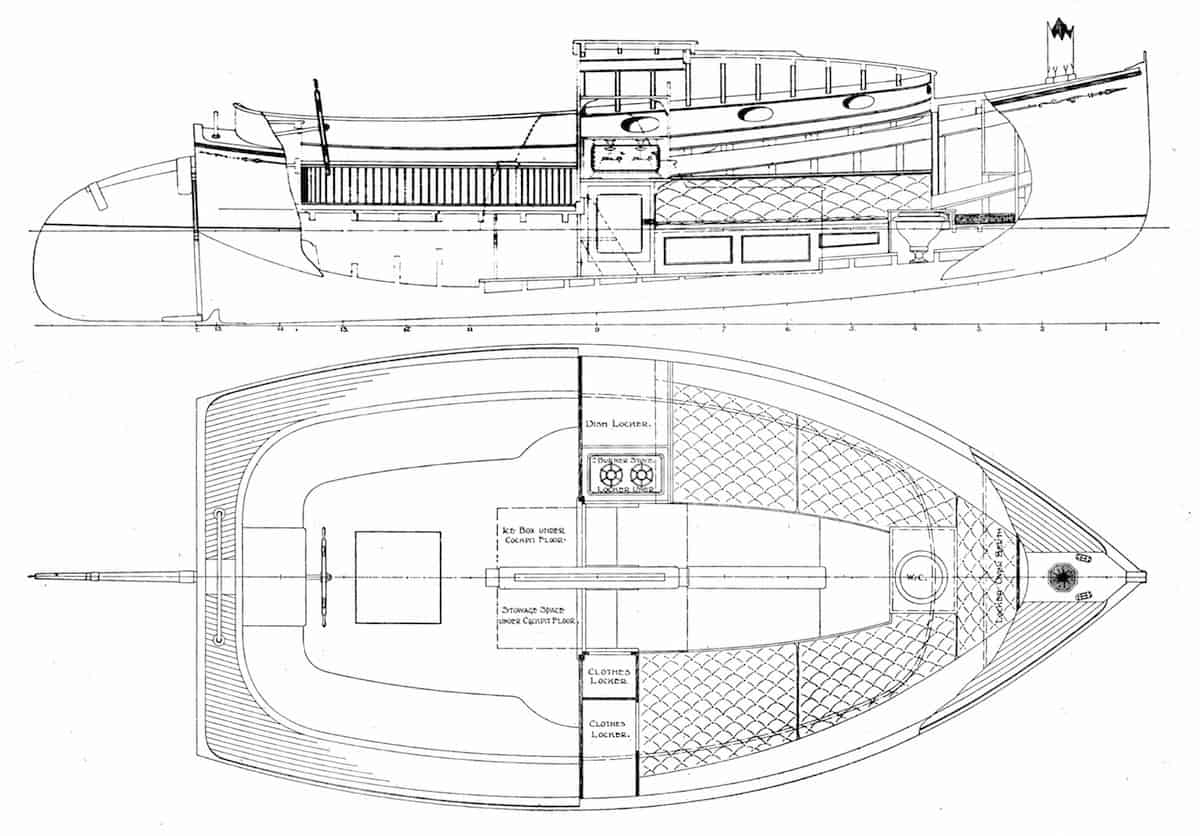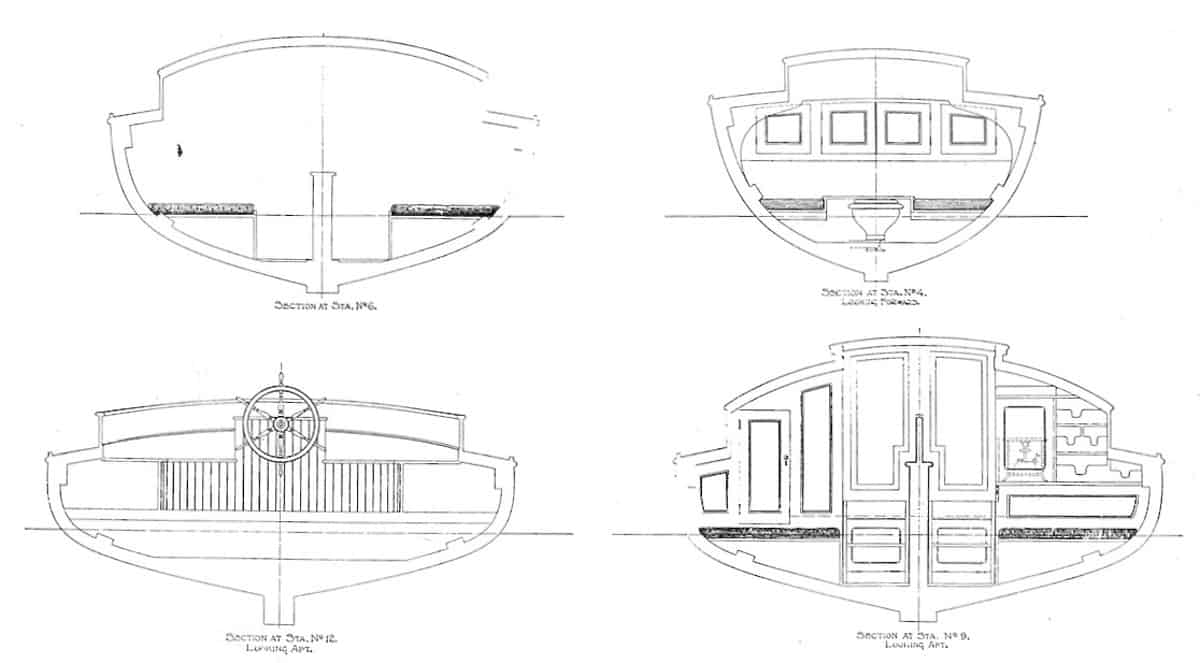Hand drafting, made obsolete by CAD programs and computers, was once an art form, and yacht designer Fred Goeller’s fine work with India ink, ruling pen, ship curves, and splines was far better than most. Even if you don’t fall in love with the idea of building or owning this lovely Cape Cod-style cruising catboat, you’ll marvel at this draftsman’s artistic drawings excerpted from the December, 1912 issue of The Rudder magazine.


. . . sign up to the right to get immediate access to this full post,
plus you'll get 10 of our best videos for free.
Get Free Videos& Learn More Join Now!!for Full Access Members Sign In


David Shipway says:
I have a 23×10 Family Cat, a design by William Garden. The extra foot of length is mostly in the raked transom, so the hull is quite similar to this Goeller, but with a smidge more draft in the keel. My sail is around 415 sq.ft., which can be a handful at times, but great in light winds, and I even run a small jib wing on wing in downwind races.
The big centerboard and lots of ballast keep her on an even keel, but the weather helm is a blessing when you get hit and leaned over by a strong gust. But it takes a lot to get the dishes flying in the galley ;)
Randolph Purinton says:
Good Morning:
I am researching the sailing qualities of catboats and I am finding the catboat drawings you feature helpful as a resource. You answered my question about weather helm recently. I have another question:
If a catboat customarily or inherently has pronounced weather helm and wants to head into the wind then does that mean that a catboat tacks easier or more readily than other sailboats that have different sailing rig configurations?
Randy
Randolph Purinton says:
Why does a cat boat have such a large rudder? Is it because it – the rudder – has to help the boat resist turning into the wind all the time because there’s only one, large sail located so far forward?
Randy
David Tew says:
yes
Donald Gregg says:
Randy, The long boom moves the center of effort far over the downwind side. this causes the driving force to push the boat to windward. Think of a door. If you push on the outside edge it swings easily; If you push nearer the hinge line it is difficult to open. Boats with the center of effort located nearer center, like opening the door closer to the hinge line, will resist turning upwind and need less rudder to correct that tendency.
Frederik Dewolf says:
I have recently acquired a Quincy Adams ‘Seventeen”, one of Geoller’s sloop designs, built by the Quincy Adams Yacht Yard in the late 1940’s. Two fleets of 15 each were supposed to have been built, one for Fisher’s Island and the other for Riverside Yacht Club. I have obtained a copy of the sail and lines plan but no other sheets. The drawings were dated October of 1945 and showing his offices as a Naval Architect to 19 Samoset Ave, in Quincy, Mass.
While there are numerous of his designs published in Rudder I can find very little information about the man, his work and his life. If anyone has any information about the man, his offices, and his original plans, I would appreciate hearing about them.
[email protected]
James Johnston says:
Hello Maynard
Let’s have some more of these old and beautifully drawn designs please.
David Tew says:
For a more technical discussion of catboat design, you can purchase “The Design Elements of a Catboat” by Fenwick C. Williams from the Catboat Association Publications page: https://catboats.site-ym.com/store/ViewProduct.aspx?id=3728391
Craig Humphrey says:
At first I guessed that this catboat was a Fenwick Williams design, not a much older design by Goeller. The plumb bow and the larger number of ports, however, should have suggested a design by someone other than Williams.
(Had an 18′ Williams built by Roy Blaney in 1972. Your daughter told me how she knew that boat when I ordered a print of the Williams she drew. I wonder what ever happened to that Blaney-built boat (MABEL HAWKER ?)).
Craig Humphrey
Peter Marshall says:
I love the detail of the bench seat as it comes into the aft end of the house with the curved cutout, perhaps allowing room to stand and get maximum power when raising sail?
Nathan Bayreuther says:
I love the detail, too. Perhaps the curved cutout is to permit cabin doors to open fully? What a great boat and so beautifully drawn.
Ken Sloan says:
I have a Wittholz designed 18′ cat. I think you are right about their purpose being to allow the cabin doors to open fully. It is a great space to stand in however when adjusting and cleating the halyards.
Richard W. Jacks says:
What a beautiful design. And finally, at least to my eye, a coaming drawn with enough sweep so it doesn’t look like the top of a bathtub.
David Tew says:
“… the sail plan was kept small….” (!!!)